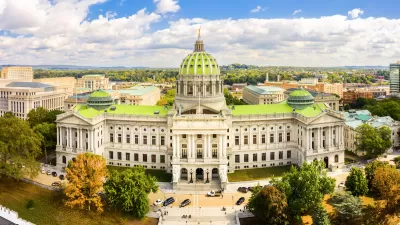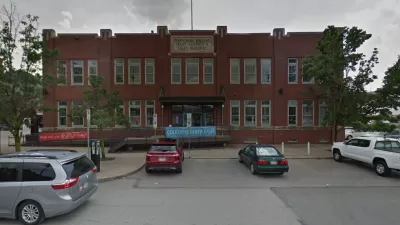The Pittsburgh Post-Gazette recently published an investigation of the city's efforts to buy and rehabilitate vacant properties in the troubled neighborhood of Homewood.

Ashley Murray and Joel Jacobs provide in-depth reporting on the city of Pittsburgh's efforts to revitalize the area of the city known as Homewood, "long plagued by blight and crime."
The city has spent $3.6 million buying vacant properties in treasurer's sales over unpaid taxes, "but dozens of the homes remain eyesores and, in some cases, the target of code violations by the city’s own inspectors," according to the article.
"The Pittsburgh Post-Gazette examined the records of 133 buildings owned by the city — including houses and storefronts — and found inspectors slapped violations on nearly 60% of them, including homes that were not only unfit for human habitation, but could place people in imminent danger," reports Murray and Jacobs.
While property owners can be punished for code violations, the city is not subject to the same enforcement.
The program of acquiring and improving vacant and blighted structures is taking on new importance as community groups have been pushing for "one of the most ambitious plans in the neighborhood’s history to promote green space, affordable housing and a business corridor to help an area that has undergone dramatic changes."
The city's vacant properties program is intended to "pave the way for development and the potential for new homes, parks and stores" under a land bank run by the Urban Redevelopment Authority. "But so far, most of the properties have not been turned over to public agencies or private investors since the city ramped up acquisitions a decade ago."
The source article includes infographics, more data, and specific examples of blight among the properties acquired by the city.

Study: Maui’s Plan to Convert Vacation Rentals to Long-Term Housing Could Cause Nearly $1 Billion Economic Loss
The plan would reduce visitor accommodation by 25,% resulting in 1,900 jobs lost.

North Texas Transit Leaders Tout Benefits of TOD for Growing Region
At a summit focused on transit-oriented development, policymakers discussed how North Texas’ expanded light rail system can serve as a tool for economic growth.

Using Old Oil and Gas Wells for Green Energy Storage
Penn State researchers have found that repurposing abandoned oil and gas wells for geothermal-assisted compressed-air energy storage can boost efficiency, reduce environmental risks, and support clean energy and job transitions.

Private Donations Propel Early Restoration of Palisades Playground
Los Angeles has secured over $1.3 million in private funding to restore the Pacific Palisades playground months ahead of schedule, creating a modern, accessible space that supports community healing after recent wildfires.

From Blight to Benefit: Early Results From California’s Equitable Cleanup Program
The Equitable Community Revitalization Grant (ECRG) program is reshaping brownfield redevelopment by prioritizing projects in low-income and environmental justice communities, emphasizing equity, transparency, and community benefits.

Planting Relief: Tackling Las Vegas Heat One Tree at a Time
Nevada Plants, a Las Vegas-based nonprofit, is combating the city’s extreme urban heat by giving away trees to residents in underserved neighborhoods, promoting shade, sustainability, and community health.
Urban Design for Planners 1: Software Tools
This six-course series explores essential urban design concepts using open source software and equips planners with the tools they need to participate fully in the urban design process.
Planning for Universal Design
Learn the tools for implementing Universal Design in planning regulations.
Ascent Environmental
Borough of Carlisle
Institute for Housing and Urban Development Studies (IHS)
City of Grandview
Harvard GSD Executive Education
Toledo-Lucas County Plan Commissions
Salt Lake City
NYU Wagner Graduate School of Public Service




























